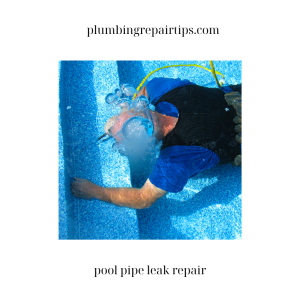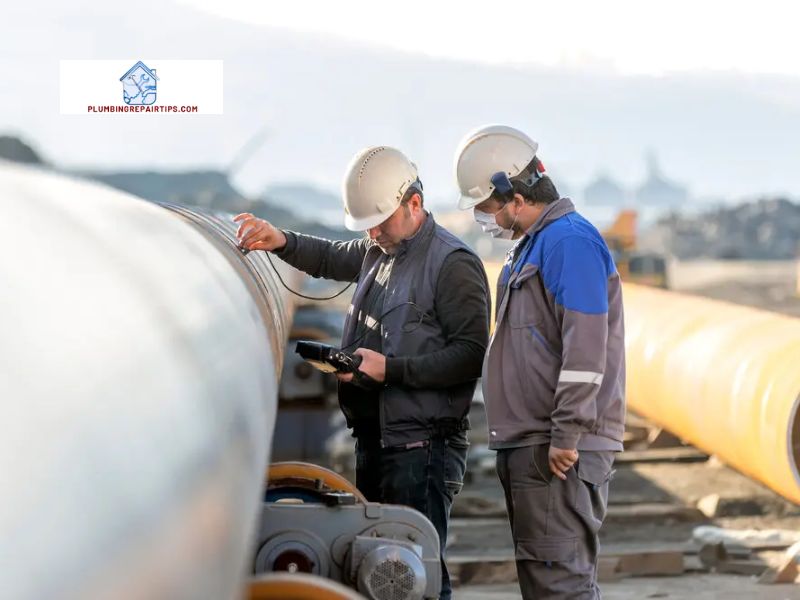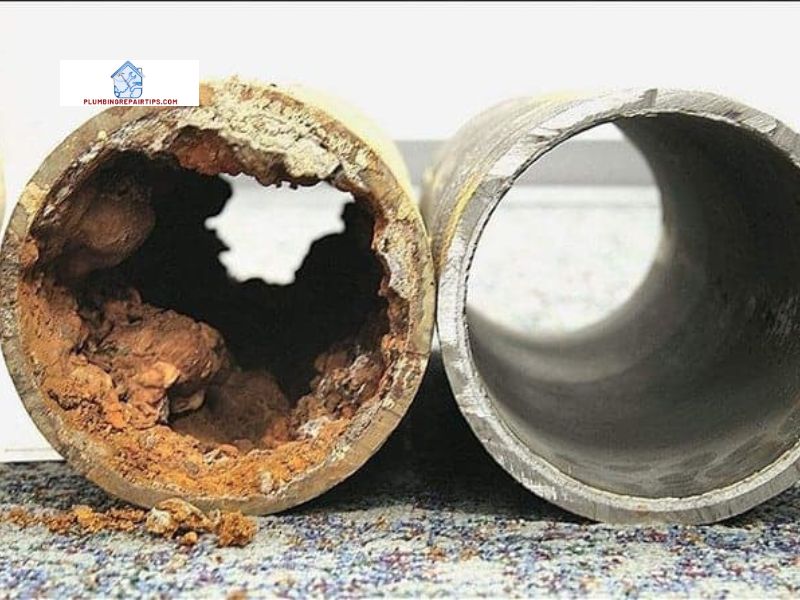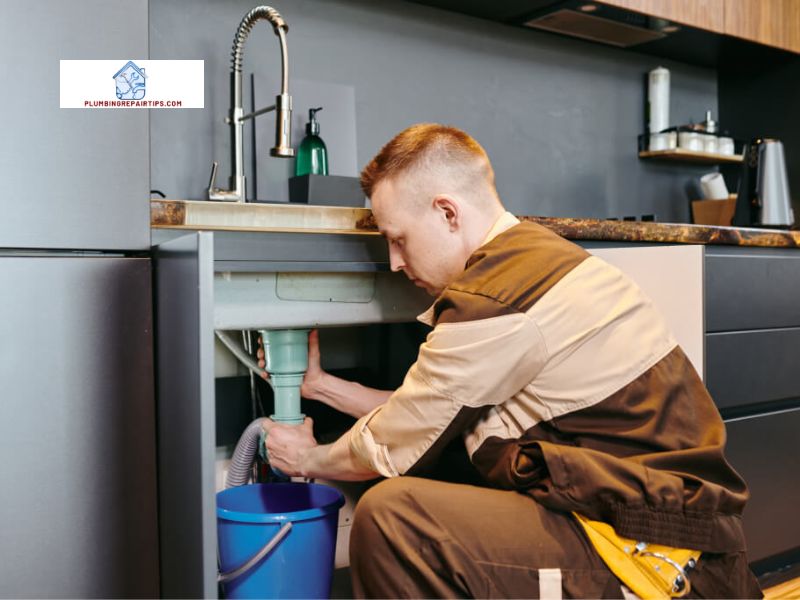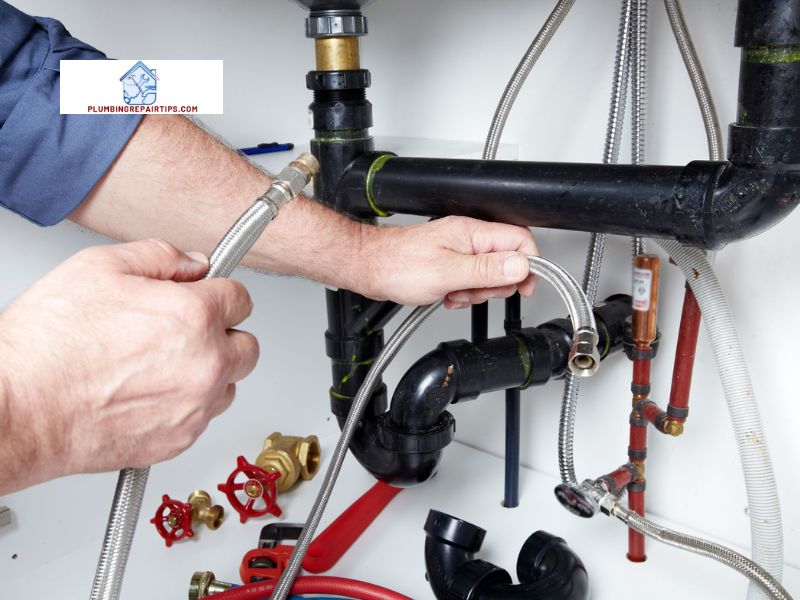As we go about our daily lives, we often take for granted the complex network of pipes that deliver water to our homes and businesses. However, lurking within these pipes is a problem that can severely impact their efficiency and longevity – scaling. In this article, plumbingrepairtips.com will explore the significance of addressing scaling issues in plumbing systems, delving into its importance, definition, and the implications it can have if left unattended.
Why is the scaling of pipes so crucial in plumbing systems?
Scaling refers to the accumulation of minerals, such as calcium and magnesium, on the inner walls of pipes over time. This buildup gradually restricts the flow of water, causing reduced water pressure and flow rates. Imagine trying to take a refreshing shower, only to be greeted by a feeble stream of water. Frustrating, isn’t it? Scaling can lead to this predicament and more.
Understanding scaling of pipes: A closer look
Scaling of Pipes occurs primarily due to hard water, which contains high levels of minerals. As water flows through the pipes, these minerals deposit on the inner surfaces, gradually forming a layer of scale. This layer can become increasingly thick, resulting in blockages and hindering the proper functioning of the plumbing system.
The significance of addressing scaling issues
Addressing scaling issues is vital for several reasons. Firstly, it helps to maintain optimal water flow and pressure, ensuring an uninterrupted supply throughout your property. Secondly, by preventing scale buildup, you can extend the lifespan of your pipes, avoiding costly repairs or replacements in the future. Additionally, scaling can lead to increased energy consumption, as appliances like water heaters need to work harder to compensate for reduced water flow. By tackling scaling, you can save on utility costs and reduce your environmental impact.
The consequences of neglecting scaling issues can be detrimental not only to your plumbing system but also to your health and safety. Scaling can create breeding grounds for bacteria, potentially contaminating your water supply. Moreover, the accumulation of scale can compromise the structural integrity of pipes, leading to leaks and potential water damage.
In the next section, we will explore the causes of scaling in pipes, shedding light on the culprits behind this persistent problem. So, stay tuned to uncover the secrets behind scaling and how it manifests in plumbing systems.
Causes of Scaling in Pipes
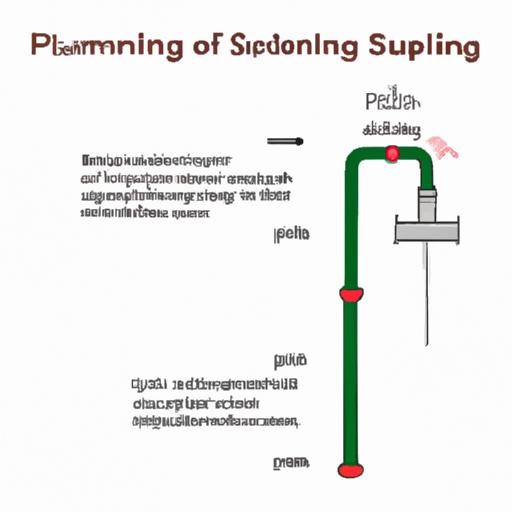
A. Hard Water and Mineral Deposits
One of the primary culprits behind scaling in pipes is hard water. When water contains high levels of minerals such as calcium and magnesium, it is referred to as hard water. As this water flows through the plumbing system, these minerals are left behind, gradually accumulating on the inner surfaces of the pipes. Over time, these mineral deposits form a stubborn layer of scale, restricting water flow and causing various plumbing issues.
B. Corrosion and Rust
Corrosion and rust can also contribute to scaling problems in pipes. When pipes are exposed to corrosive elements, such as certain chemicals or harsh water conditions, they can deteriorate over time. As the pipes corrode, it creates rough surfaces and weak points where scale can easily adhere and accumulate. The combination of corrosion and mineral deposits can lead to significant scaling issues within the plumbing system.
C. Organic Matter Buildup
While mineral deposits are a common cause of scaling, organic matter can also contribute to the problem. Over time, organic matter, such as bacteria, algae, and other microorganisms, can accumulate on the inner surfaces of pipes. This organic buildup provides a surface for minerals to attach to, accelerating the scaling process. Additionally, the presence of organic matter can contribute to foul odors and potential health risks if left untreated.
D. Other Factors Contributing to Scaling
Apart from the aforementioned causes, several other factors can contribute to scaling in pipes. These include high water temperatures, improper pH levels, and the presence of certain chemicals in the water supply. Understanding these additional factors can help identify and address specific issues that may be contributing to scaling problems in your plumbing system.
By recognizing the causes of scaling in pipes, you can take proactive measures to prevent and mitigate its effects. In the next section, we will dive into the consequences of scaling on plumbing systems, unraveling the various challenges it poses. So, let’s explore how scaling can impact the efficiency and longevity of your pipes.
Effects of Scaling on Plumbing Systems
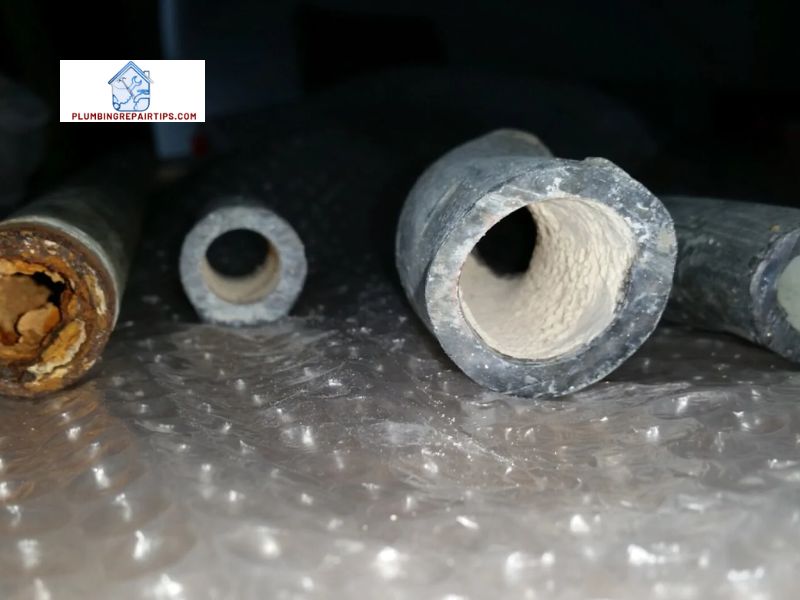
A. Reduced Water Flow and Pressure
One of the primary consequences of scaling in pipes is the significant reduction in water flow and pressure. As minerals accumulate and form scale on the inner walls of the pipes, the available space for water to pass through narrows. This restriction causes water to flow at a slower rate, resulting in reduced pressure at faucets, showers, and other water outlets. You may notice a frustratingly weak stream of water, making simple tasks like washing dishes or taking a shower a tiresome chore.
B. Decreased Lifespan of Pipes
Scaling can drastically shorten the lifespan of pipes, leading to premature deterioration and the need for frequent repairs or replacements. The buildup of scale not only restricts water flow but also increases the internal pressure within the pipes. Over time, this added strain weakens the structural integrity of the pipes, making them more susceptible to leaks, cracks, and other forms of damage. By addressing scaling issues promptly, you can help prolong the lifespan of your plumbing system and avoid costly repairs down the line.
C. Increased Energy Consumption and Utility Costs
When scaling occurs, the reduced water flow and pressure can have a direct impact on your energy consumption and utility costs. Appliances like water heaters, dishwashers, and washing machines rely on a steady and adequate water supply to function efficiently. However, when scale buildup restricts the flow, these appliances need to work harder and longer to achieve the desired results. As a result, you may experience increased energy consumption, leading to higher utility bills. By tackling scaling issues, you can restore optimal water flow, reducing the strain on your appliances and ultimately saving on energy costs.
D. Potential Health and Safety Risks
Neglecting scaling issues can also pose potential health and safety risks. The accumulation of scale provides an ideal environment for bacteria and other microorganisms to thrive. These contaminants can find their way into your drinking water, potentially compromising your health. Additionally, if the scaling causes leaks or water damage, it can lead to mold growth, further exacerbating health concerns. By addressing scaling in your plumbing system, you can ensure the safety and well-being of you and your family.
In the next section, we will delve into the preventive measures and maintenance techniques that can help combat scaling issues effectively. Stay tuned to discover how you can protect your plumbing system from the damaging effects of scale.
Scaling Removal Techniques
Scaling can be a stubborn problem that requires effective removal techniques to restore the efficiency of your plumbing system. In this section, we will explore various methods to tackle scaling and restore your pipes to their optimal condition. Let’s dive in!
A. Mechanical Descaling Methods
Mechanical descaling methods involve physically removing scale deposits from the inner walls of pipes. One common technique is pipe scraping, which utilizes specialized tools to scrape off the accumulated scale. This method is typically effective for smaller-scale buildups or localized areas of scaling. Additionally, pipe brushing can be employed, where brushes with stiff bristles are used to scrub away the scale. Mechanical descaling methods are often used in combination with other techniques for comprehensive scaling removal.
B. Chemical Descaling Agents
Chemical descaling agents are powerful solutions designed to dissolve and remove scale deposits. These agents are applied to the affected pipes and left to react with the scale, breaking it down and facilitating its removal. Common chemical descaling agents include acidic solutions that effectively dissolve mineral deposits. It is crucial to follow the manufacturer’s instructions and safety guidelines when using chemical descaling agents to ensure proper usage and prevent damage to the pipes or harm to individuals.
C. Hydro-jetting and High-Pressure Water Cleaning
Hydro-jetting involves using high-pressure water streams to clean and remove scale from pipes. This technique utilizes specialized equipment that delivers a strong and concentrated stream of water, effectively dislodging and flushing away the scale deposits. Hydro-jetting is particularly useful for removing stubborn and extensive scale buildup. It is a highly effective method, but it should be performed by professionals to avoid any damage to the pipes.
D. Pipe Replacement as a Last Resort
In severe cases where scaling has caused irreversible damage to the pipes, replacement may be the only viable solution. This is often a last resort when other scaling removal techniques have proven ineffective or when the pipes have significantly deteriorated. Pipe replacement ensures a fresh start, eliminating the existing scale and preventing future scaling issues. It is recommended to consult with a professional plumber to assess the extent of the damage and determine if pipe replacement is necessary.
Scaling removal techniques can vary in effectiveness depending on the severity of the scaling and the specific situation. It is advisable to consult with a professional plumber who can assess the condition of your plumbing system and recommend the most suitable scaling removal method for your specific needs.
Stay tuned for the concluding section, where we will summarize the importance of addressing scaling issues and provide key takeaways to maintain a healthy plumbing system.
Scaling of Pipes: A Lasting Solution to Plumbing Woes
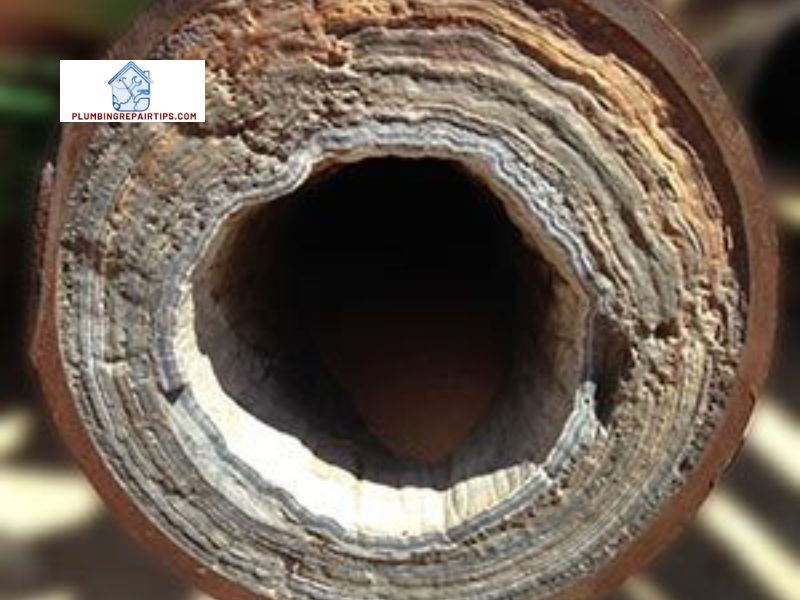
As we near the end of our exploration into the world of scaling in plumbing systems, it is essential to discuss the available techniques for removing and preventing this persistent issue. By employing the right strategies, you can ensure the longevity and efficiency of your pipes, saving you from the headaches and expenses associated with scaling. Let’s delve into the last section of this article and uncover the solutions that will help you bid farewell to scaling-related troubles.
Prevention and Maintenance of Scaling
A. Water Softening Techniques: One of the primary causes of scaling is hard water, which contains high mineral content. Implementing water softening techniques, such as using water softeners or descaling agents, can help reduce the mineral buildup in your plumbing system. These techniques work by replacing the minerals with sodium ions, preventing scale formation, and maintaining the smooth flow of water.
B. Regular Pipe Inspection and Cleaning: To prevent scale buildup, it is crucial to conduct regular inspections and cleaning of your pipes. By identifying early signs of scaling, you can take prompt action to remove the deposits before they cause significant blockages. Professional plumbers can employ various methods like hydro-jetting or mechanical descaling to ensure your pipes remain clear and free from scale.
C. Proper Chemical Treatment: Chemical treatments can be used to dissolve existing scale deposits in your pipes. These treatments work by breaking down the minerals and facilitating their removal. However, it is important to exercise caution when using chemicals and follow the instructions provided to ensure the safety of your plumbing system and the environment.
D. Installation of Filtration Systems: Installing filtration systems, such as water filters or reverse osmosis systems, can help remove impurities and minerals from your water supply. These systems act as a barrier, preventing the minerals from entering your plumbing system and reducing the chances of scale formation.
By adopting these preventive measures and incorporating regular maintenance into your plumbing routine, you can effectively combat scaling issues and enjoy a smoothly functioning plumbing system.
In conclusion, scaling of pipes is a concern that requires attention and proactive measures. From understanding the importance of addressing scaling to exploring prevention and maintenance techniques, we have covered the crucial aspects of this topic. Remember, a well-maintained plumbing system not only ensures optimal water flow and pressure but also saves you from costly repairs and potential health hazards. Take charge of your plumbing system, implement the recommended solutions, and bid farewell to scale woes.
Thank you for joining me on this journey through the world of scaling in plumbing systems. For more insightful tips and guidance on maintaining a healthy plumbing system, visit plumbingrepairtips.com – your trusted source for all things plumbing.
